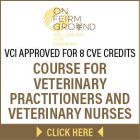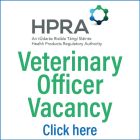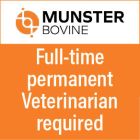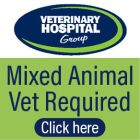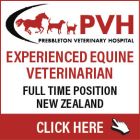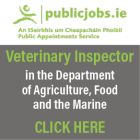Focus - Herd health - November 2018
AMR – a challenge to vets, farmers and herd health
At CAVI 2018, Donal Lynch MVB Cert DHH, from Donal Lynch Veterinary Practice and XL Vets, hosted a session on antimicrobial resistance (AMR) and the challenges it poses to veterinary practitioners and farmers. In this article, Donal revisits this most serious topic and the impact of AMR on herd health
The development of antimicrobial resistance is due to exposure of bacteria to antibiotics. This generation has seen a growing emphasis on appropriate choice of antibiotics to treat specific bacterial infections and avoidance of their use where possible. However, any exposure – either appropriate or inappropriate – is continually contributing to the AMR problem as bacteria have the potential to develop resistance (as a result of exposure). This exposure may be intended in cases such as salmonellosis being treated with a cephalosporin, or environmental e-coli coming in contact with oxytetracyline being excreted in animal faeces.
Great potential
Vets, together with their farming clients, have made enormous strides in reducing the amount of antibiotics being used in Irish farming since the start of this century. Herd health has become the norm with a realisation that prevention of disease is the key to protecting profitability of any farming enterprise. Vets are key in assisting the Irish farmer through vet-led herd health in preventing the destruction of the potential created by genetics and realised by good farming management. A 24-hour, seven-days-a-week, fire brigade response to disease will always be a cornerstone of veterinary practice in Ireland – we are one of the only professions that still provide such a service to our patients and clients. In this context, we need to continue to make the most appropriate choice of treatments, whether this includes an antibiotic or not.
Herd health is a holistic approach towards preventing disease and maximising the potential of a farming enterprise in a sustainable, environmentally and animal-welfare friendly manner. It is said that genetics creates the potential, management realises that potential and disease has the potential to destroy it.
Vaccination
Vaccination rates have increased rapidly year on year with a growing realisation of the importance of prevention being better than cure. However, vaccination alone is not good enough without the benefits of appropriate farming practices. We have looked at cases of bovine neonatal diarrhoea caused by cryptosporidium parvum where contributing causative factors have included parasitism in the cows, ventilation issues in the winter housing, bedding conditions, colostrum management and genetic predisposition.
For Irish vets, the key to reducing the development of bacteria resistant to the antibiotics that we have currently available to us is to reduce the total amount being used. We expect to achieve this by working towards healthier animals, which deliver a greater profit to the farmer for producing a quality product.
Management
Year on year there is significant growth in preventative medications such as vaccinations, which have become a cornerstone of preventative medicine plans for us. Vaccinations alone will not prevent disease and improvements in management have delivered the progress necessary to make this realisable. Educational initiatives where the vet is the conduit of information flow to the farmer have addressed areas such as dry cow management, colostrum management, general hygiene, parasite, stress control and housing management.
CAVI 2018
At the recent CAVI 2018 conference in Mullingar, interactive discussion sessions looked at two individual example cases where there were deficiencies in farm management that led to disease outbreak that required antibiotic treatment. The remit of the discussion was to identify the shortcomings, as well as the practical and cost-effective ways forward while protecting the food supply in an environmentally sustainable way that was animal-welfare friendly and led to a reduced requirement for antibiotics. Vets of all ages and career stages were present – students, newly qualified, retired, and from several different sectors of the profession, including pharmaceutical.
Both cases considered the human side of the issues and some potential difficulties in supporting management, when other factors were contributing to stress on the farm manager such as financial constraints, particularly in a year such as this where there was a massive increase in the cost of feeding due to the summer drought.
Case 1
The first case involved a calf-to-beef system where there was an outbreak of mycoplasma bovis pneumonia during the milk feeding stage. The groups quickly identified issues with sourcing of calves and associated stresses in mixing from multi-sources as well as the difficulties with a shed that was not purpose-built. The easy solution is to build a purpose-built calf shed and source all the calves from one source on one day, but this is not so practical. The solutions included batch-buying; identifying the farms that had the best early-calf management through total protein and ZST results; and buying preferentially from these farms going forward. The shed needed attention and a practical, cost-effective suggestion to address this issue was to install a positive pressure fan and duct – this would be a short-term solution, with a view to designing a shed and business plan for the long-term. Vaccination on arrival was agreed to be fundamental and check-ups of the diet and bedding quality were agreed to be key to the vaccine working well.
Case 2
The second case involved a dairy farm that had expanded beyond the available housing facilities and experienced difficulties with clinical mastitis following on from an inappropriate choice of intramammary. The advice from the group included more detailed looking at records, better advice and more appropriate choices around drying off, including weather conditions, time of day and numbers to be done at one time.
There was also significant discussion around housing options and ways to manage with limited resources. Solutions included outwintering on appropriate land and medium-term shed expansion with a detailed business and cashflow plan.
Herd health
Both cases demonstrated the abilities of the veterinary profession to address complicated herd animal-health issues while being cognisant of the real-life challenges created by other issues such as financial pressures and business difficulties on farm. I believe that the best way to manage AMR on-farm is by reducing the use of antibiotics through sustainable, long-term, disease-control plans, drawn up in consultation between the farmer and their local vet who has a holistic knowledge of the farm, to produce healthy animals in a welfare-friendly way.


